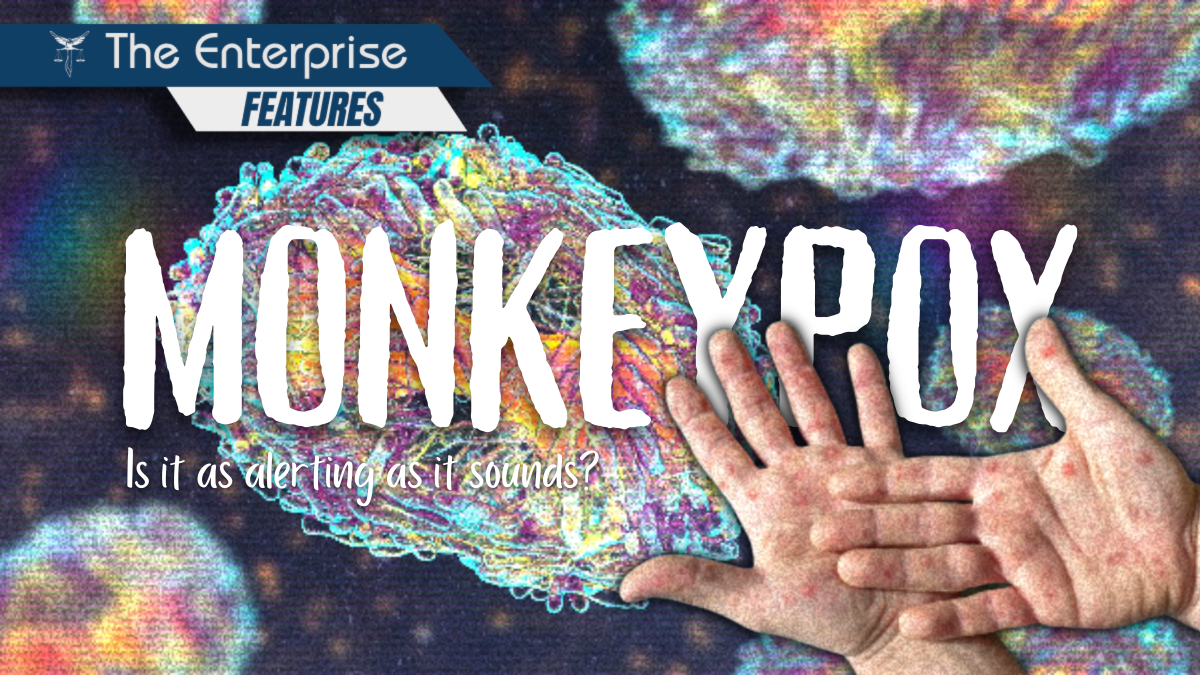
OSA holds FTF seminar, trains HAU’s publications
October 18, 2022
Modern daters ask: Who should pay for the first date?
October 24, 2022Is Monkeypox as alerting as it sounds?

Monkeypox (MPXV) is a zoonotic virus caused by a smallpox-like disease, infecting any individual exposed to or who had close contact with an infected animal. The World Health Organization (WHO) declared a global health emergency with more than 40,000 confirmed cases throughout 94 countries and continuously increasing worldwide.
Along with the current health crisis, the emergence of this new infectious agent increased the Filipinos’ anxiety. Numerous reports confirmed that the virus could infect anyone, but some suggest it is not something to panic about. Given that the various statements furrow our brows, let us find out if the virus is as alarming as it sounds.
How it all started
Monkeypox is a virus transmitted through physical contact, including scratches, animal bites, bodily fluids, or undercooked meat consumption. It was predominantly found in tropical rainforests of Central and West Africa, where its potential carriers were dormice, squirrels, and rats.
In 1958, the virus was first found in laboratory monkeys. Hence its name, “Monkeypox.” Although WHO has conducted countless assessments since 2017 in Nigeria, the main source of the virus infection is still unidentified.
Last May 7, 2022, WHO declared a confirmed virus case. Thus far, the outbreak has spread throughout the globe.
Method of transmission
The symptoms could exist from mild to severe. In addition, fever, headache, muscle aches, weariness, and back pain are common symptoms of the virus.
Unlike smallpox, the infection causes swollen lymph nodes. These symptoms can result in or be accompanied by a rash found on every part of the body, including the face, eyes, mouth, throat, groin, hands, feet, genital areas, and anal regions.
In addition, this virus causes lesions. In most cases, lesions are the first to be treated rather than rashes, as these can be painful and itchy. As WHO prescribes, any individual who has developed rashes and lesions should prevent close contact.
After infection, symptoms started to show up around five to 13 days. These can last for 14-21 days. Generally, these disappear for about a few weeks or even on their own. In 2022, the method of transmission can be through person-to-person (or skin-to-skin) contact, which includes kissing and directly touching the person infected with the virus. Furthermore, fomite transmission is another method of transmission through smelling different materials, including towels, clothes, or any objects that have been used or touched by the infected person. Any individual can be infected by touching any materials handled by the infected person.
Meanwhile, it is affirmed that the virus has not yet been identified as an airborne virus. It can be contracted primarily through the mouth, sores, and bodily fluids.
Who is prone to Monkeypox?
Infants and children are vulnerable to this infectious disease, as they can easily be infected if exposed — or if they have close contact with the infected individual.
In most cases, the virus can be detected in those people who seek professional help from sexual health institutions. Conversely, chickenpox, herpes, and syphilis are the most similar conditions to contagion.
Based on the initial presentations, a significant number of cases are among men who have sexual contact with men. Regardless of sexual orientation, the number of sexual partners continues to be the primary factor in the reproduction of cases.
On the other note, the risk of the virus is not merely among sexually active people. Any individual can be at risk as other transmission methods could trigger and infect anyone with it.
The vaccine
There is no cure for this infectious disease as of this moment, but there is a vaccine that can help to prevent it. Recently, the Food and Drug Administration (FDA) approved a vaccine recommended for people who are merely at risk.
In addition, one of the smallpox vaccines has been approved to prevent the disease. However, studies showed that the effectiveness of the vaccines was still limited to research and clinical practices.
The treatment
In January 2022, an antiviral, a product for treating smallpox, was approved as a treatment for the contagion by the European Medicines Agency.
Though some conditions do not require any medications as they can disappear independently, some medications for fever and pain could help mitigate the symptoms of the virus.
Further, healthy food intake, drinking a lot of water, and getting enough sleep have been pointed out to relieve the symptoms.
Is Monkeypox as alerting as it sounds?
The WHO considered Monkeypox less alerting than Covid-19. However, it has a lot of complications and concerns, as some cases can lead to medical complications or even death, but only in rare cases.
Thus far, medical professionals are still investigating virus transmission in asymptomatic cases. Other concerns lead to the study of the spread through semen, vaginal fluids, urine, or feces. However, there are no definite answers to these concerns.
With the current health crisis, the stigma is one of the main concerns of WHO as it creates more difficulties in tracking and mitigating the infection.
With the alarming rate of cases, every second counts. Monkeypox is not a new virus, but as Dr. Rasmussen stated, “We can contain it again. The key is going to be identifying all the cases.”
In this critical time, we must awaken the “Bayanihan” spirit to turn off the ear-splitting stigma among people regardless of sexual orientation and age. Among us is not the enemy but a virus that we can mitigate and solve together.


